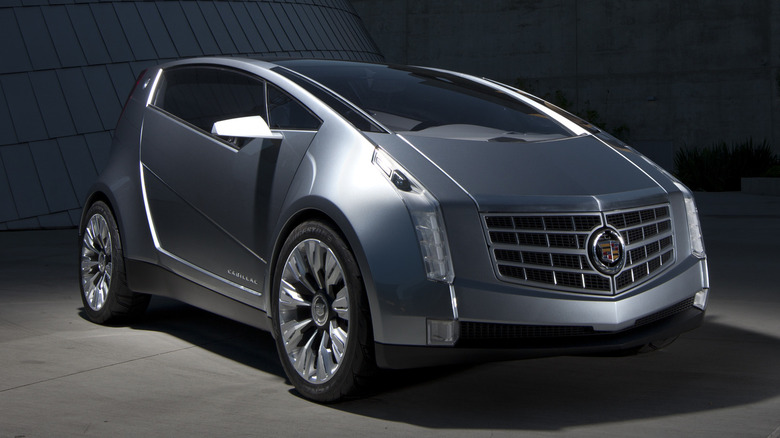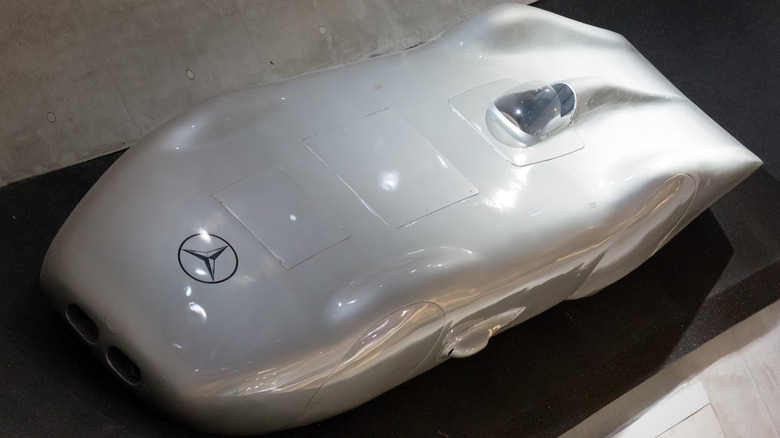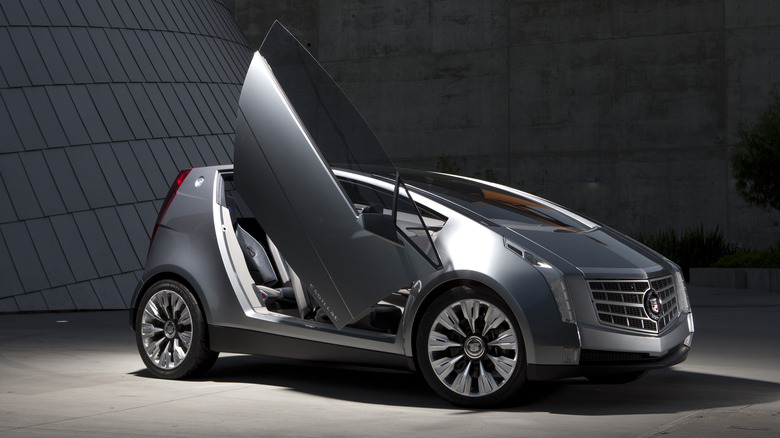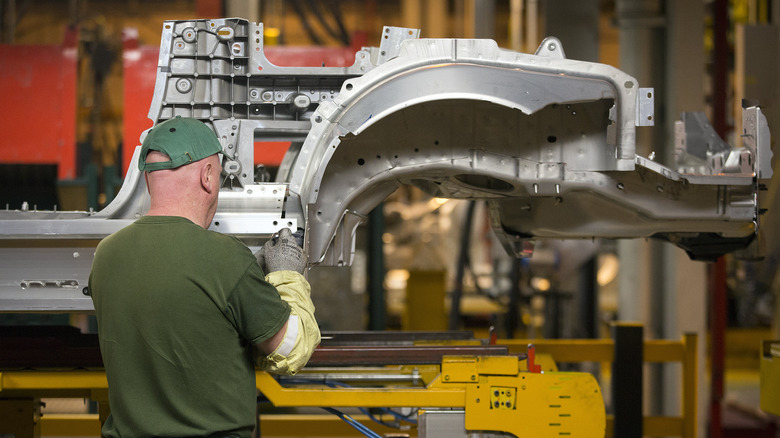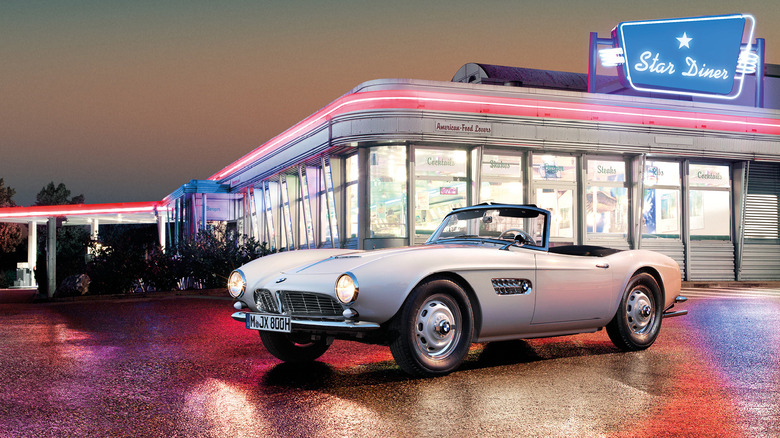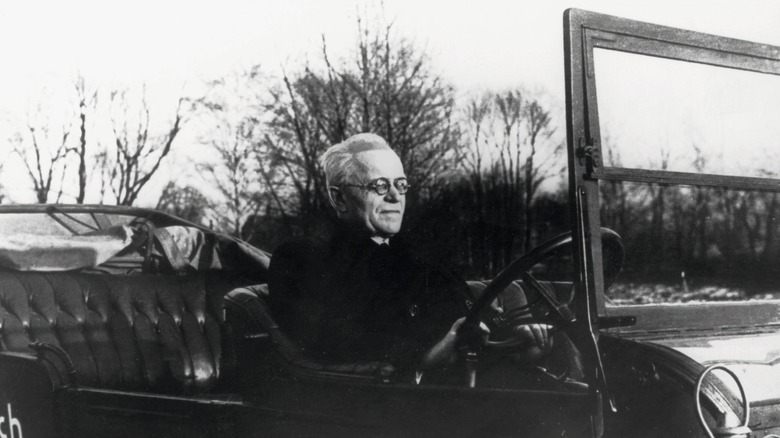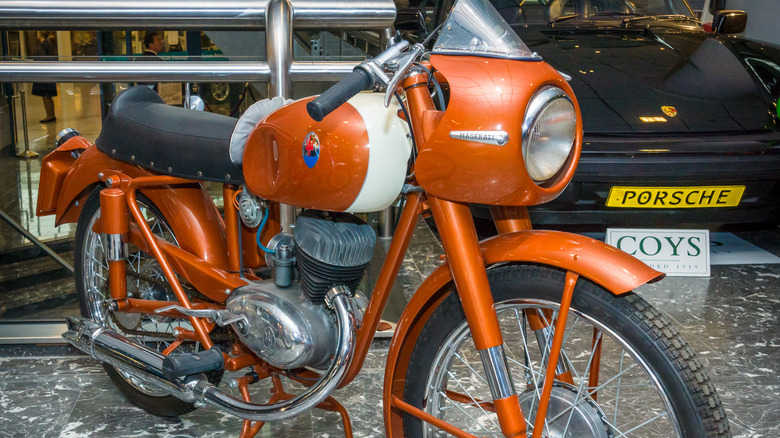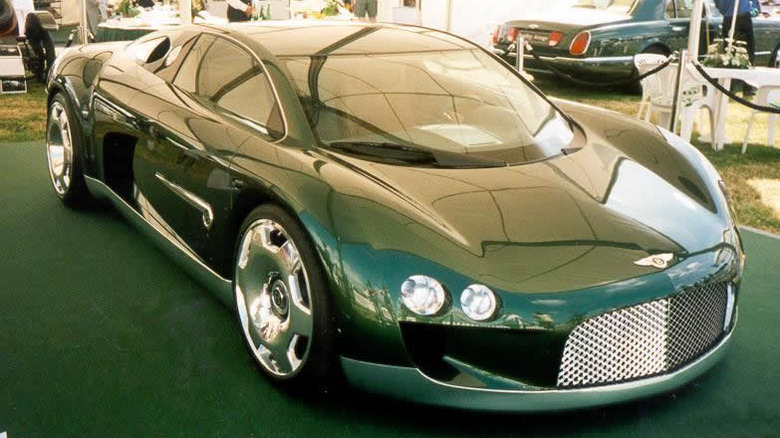8 Little-Known Facts About Popular Luxury Car Brands
The world's best luxury car brands tend to have one thing in common — they've all been around for long enough to have storied histories, usually filled with a mix of motorsport victories, iconic models, and endorsements from the world's most powerful figures. However, for every brand-defining highlight, there are always some lesser-known stories that get forgotten about, be that by accident or because the brand in question prefers to keep a certain event or car out of the spotlight.
From the American luxury carmaker that once tried to build a city car with a 1.0L engine to the Italian carmaker that created a motorcycle brand by accident, not all of these forgotten facts are flattering to the brands they involve. We've plucked out eight obscure stories from the archives that are likely to have flown under most enthusiasts' radars, perhaps even those who consider themselves to be big fans of these famous luxury brands.
Mercedes-Benz made a 269 mph car in 1938
A lot of Mercedes' history during the late '30s has been obscured thanks to the company's connection with the Third Reich. However, its engineers produced some truly remarkable cars, including the "Rekordwagen," which set a record speed of 268.9 mph on a German autobahn. The car was based on the decorated W125 race car, but it featured a new, streamlined body for maximum slipperiness to help it set a new record. Powering the car was a 5.6L V12 engine with twin superchargers, bringing its output up to 725 horsepower.
Since the experimental Rekordwagen was only a one-off, it didn't qualify for the production car record, so it has been largely forgotten over time. However, it still resides in the Mercedes-Benz Museum in Stuttgart, Germany, taking pride of place as one of the brand's most incredible feats of engineering. It would take until 2017 for Koenigsegg to set a faster speed record on a public road, when it took the Agera RS to 277.9 mph, setting the production car world record in the process.
[Featured image by Morio via Wikimedia Commons | Cropped and scaled | CC BY-SA 3.0]
Cadillac once designed a city car to rival the Mini
Cadillac is best known for its huge, opulent vehicles, but in 2010, it decided to explore a different direction. Aimed at capitalizing on the emerging trend of luxury compact cars in Europe, the Cadillac Urban Luxury Concept was around the size of a Mini. However, it featured an interior just as luxurious as the brand's full-size cars. The car was powered by a three-cylinder 1.0L engine, which was borrowed from PSA — the former parent company of the popular Peugeot and Citroën brands.
Unusually for a concept, the interior seemed to be fitted to a near-production standard, leading to some rumors that the little Cadillac was destined for dealerships. However, Caddy's low sales figures in Europe meant that producing a car specifically for the region would not have been financially viable, and so the Urban Luxury Concept never progressed past the design study stage.
Every Jaguar chassis is brushed with emu feathers
In order to ensure that the paintwork of every Jaguar chassis is faultless, each one undergoes a multi-step process to remove any imperfections before painting begins. It's coated with varnish and is then put through several different cleaning tanks, each one designed to remove a specific type of imperfection that might have accumulated on a chassis during the manufacturing process. The last step before painting is to brush the whole chassis with feather brushes to remove any final bits of dust.
Jaguar chooses to use emu feathers for the brushes, as they can be statically charged and are excellent at picking up any stubborn remaining pieces of dust and debris. They're also larger than most other natural feathers, allowing each one to cover a wider area of the chassis. Using emu feathers is significantly more expensive than using other feathers or synthetic materials, but Jaguar claims that nothing else it's tried can do the job as perfectly every time.
BMW restored Elvis Presley's custom 507 sports car
The rock and roll legend might have been famously obsessed with Cadillacs, but one of Elvis Presley's most cherished sports cars was in fact a used BMW 507 he bought while stationed out in Germany. He wasn't too keen on the engine it came with, and so sent it back to Bimmer with the instructions to fit a V8. They obliged, bumping the car's power output up to 150 horsepower in the process. When Elvis bought the car, it was painted white, but the story goes that so many fans were leaving red lipstick marks on the paintwork that he decided to have the car repainted red instead.
After returning home to the U.S., Elvis sold the car to a Chrysler dealer, and it eventually ended up in the hands of a local radio DJ. The original engine was ripped out and replaced with a Chevy V8, and the car was then passed between several owners over the following years.
The car disappeared for decades but was eventually found in storage in a very dilapidated state. BMW found out and bought it from its owner, then commissioned its experts to painstakingly restore the car by hand. The restoration used as many of the original parts as possible, but the original BMW V8 engine was never located. As a result, the team chose to use a new Chevy V8 to commemorate the car's unique heritage. The car was refinished in its original shade of white and then unveiled at the Pebble Beach Concours in 2016.
The founder of Audi was blocked from using his own name for the company
After 10 years in business, August Horch left the company he co-founded under his name to form a rival carmaker following disagreements with his business partners. However, he had a problem — he couldn't call his new outfit Horch, as his former company had trademarked the rights to his name. So, he had to get creative. Horch eventually opted to use the Latin translation of his name, Audi, for the new firm. In English, the word translates roughly as "listen."
The idea was reportedly thought up by the son of one of Horch's business partners, but after the new company name was decided, its founder went all in on the change. He even signed documents as Mr. Audi-Horch, making him Mr. Listen-Listen if the name was directly translated. Eventually, Audi would merge with a number of other German carmakers to become Auto Union and eventually be sold to VW, where it remains highly successful today.
Ironically, the Horch automobile company was one of those four companies that merged to make the new conglomerate, and eventually, the name was phased out altogether.
Maserati motorcycles were created because of a legal mistake
Maserati was taken over in the early 1950s and split into various smaller companies. However, thanks to a mistake during the separation of Maserati subsidiaries during the takeover, a notary accidentally granted the spark plug manufacturing division the legal rights to use the Maserati name and logo on anything it wanted. Seeing the success that Maserati's cars were having in national and international races, the spark plug maker promptly capitalized on the mistake. It bought up a small motorcycle maker and started producing Maserati-branded bikes — despite the company no longer having any legal relation to Maserati the carmaker.
With the legal gaffe being non-reversible, there was nothing that the carmaker could do but sit and watch another company take advantage of the goodwill associated with its name. The motorcycle brand was quite successful throughout the '50s but ran out of cash in the '60s as bikes fell out of favor with buyers and city cars became the go-to mode of transportation. Few examples of Maserati motorcycles survive today, but those that do are collectors' items thanks to their unique backstory.
The Sultan of Brunei doubled Rolls-Royce's earnings in the '90s
Once thought to be the world's richest man, the Sultan of Brunei and his brother Prince Jefri spent an unfathomable amount of money on Rolls-Royce and Bentley in the mid-'90s. It's been claimed that, between 1994 and 1997, around 50% of the company's earnings came from the two men, who almost single-handedly kept the company profitable. The reason for the Sultan's seemingly endless riches was that Brunei, although a small nation in size, had huge reserves of oil. Revenue from the oil sales went directly to the royal coffers, leaving the Sultan with a constant stream of money with which to purchase new luxury cars.
Purchase them he did — reportedly around 70 to 75 every year, most of which sported custom adaptations or design changes to suit the Sultan's and Prince's wishes. A slew of models were also created specifically for the pair, including the Bentley Dominator SUV, the sleek Java sports GT, and various Rolls-Royce limousines. The Sultan's buying power eventually waned, but by then, Rolls-Royce and Bentley had been sold to new owners who put significant investment into diversifying the two companies away from the whims of one family.
Bentley made a prototype Bugatti Veyron in 1999
VW Group was exploring a variety of options for developing a flagship hypercar in the late '90s, and one option was to develop it under the Bentley brand. The Hunaudières prototype was unveiled in 1999, boasting a supposed 8.0L W16 engine making more than 600 horsepower. However, in reality, the prototype was non-functional, and the engine was only a mockup that was relatively early in development, meaning it was still a significant way off from being able to power the car.
The Hunaudières sported similar styling and a closely related engine to what would become the Veyron, but ultimately it was decided that Bentley should stay as the luxury-oriented brand in VW's portfolio while an entirely new brand would be used for the hypercar. That brand turned out to be Bugatti, which VW had bought a year prior to the Hunaudières' unveiling. The first Bugatti Veyron prototype was unveiled just a few months later in 1999, but it would take until 2005 for the production version of the revolutionary car to hit the market.
[Featured image by Riceburner75 via Wikimedia Commons | Cropped and scaled | CC BY-SA 2.0]
